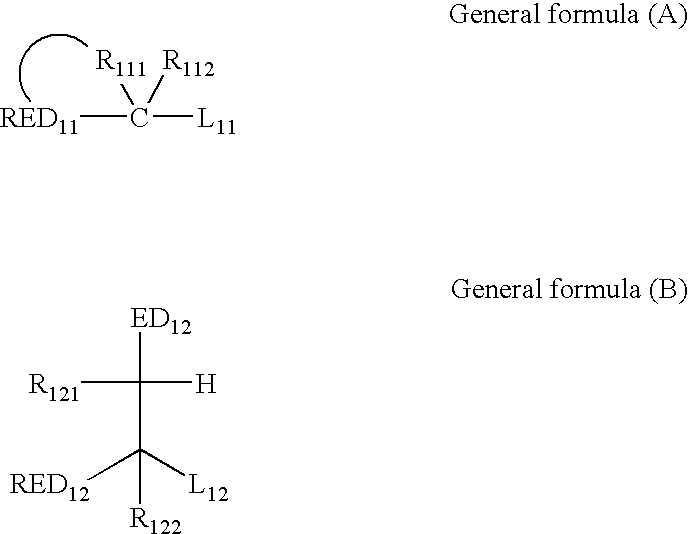Photothermographic material
a technology which is applied in the field of photothermographic material and image forming method, can solve the problems of not being able to obtain sufficient sensitivity, not being able to meet the requirements of image output system for medical use, and worsening printout, so as to reduce scattering, reduce scattering, and reduce the effect of scattering
- Summary
- Abstract
- Description
- Claims
- Application Information
AI Technical Summary
Benefits of technology
Problems solved by technology
Method used
Image
Examples
example 1
[0468] 1-1. Preparation of PET Support
[0469] (Film Preparation)
[0470] PET with an inherent viscosity IV=0.66 (measured in phenol / tetrachloroethane=6 / 4 (weight ratio) at 25.degree. C.) was prepared using terephthalic acid and ethylene glycol in accordance with a customary method. After pelleting the product, it was dried at 130.degree. C. for 4 hours, melted at 300.degree. C., and then extruded from a T die and quenched to prepare a not-stretched film of 175 .mu.m thickness after heat setting.
[0471] The film was stretched longitudinally by 3.3 times using rolls of different circumferential speeds and then stretched laterally by a tenter by 4.5 times. The temperatures was at 110.degree. C. and 130.degree. C., respectively. Subsequently, it was heat set at 240.degree. C. for 20 sec and then relaxed by 4% in the lateral direction at an identical temperature. Then, after slitting the chuck portion of the tenter, it was knurled at both ends, and taken up under 4 kg / cm.sup.2, to obtain a r...
PUM
| Property | Measurement | Unit |
|---|---|---|
| particle size | aaaaa | aaaaa |
| particle size | aaaaa | aaaaa |
| emission peak intensity | aaaaa | aaaaa |
Abstract
Description
Claims
Application Information
 Login to View More
Login to View More - R&D
- Intellectual Property
- Life Sciences
- Materials
- Tech Scout
- Unparalleled Data Quality
- Higher Quality Content
- 60% Fewer Hallucinations
Browse by: Latest US Patents, China's latest patents, Technical Efficacy Thesaurus, Application Domain, Technology Topic, Popular Technical Reports.
© 2025 PatSnap. All rights reserved.Legal|Privacy policy|Modern Slavery Act Transparency Statement|Sitemap|About US| Contact US: help@patsnap.com



